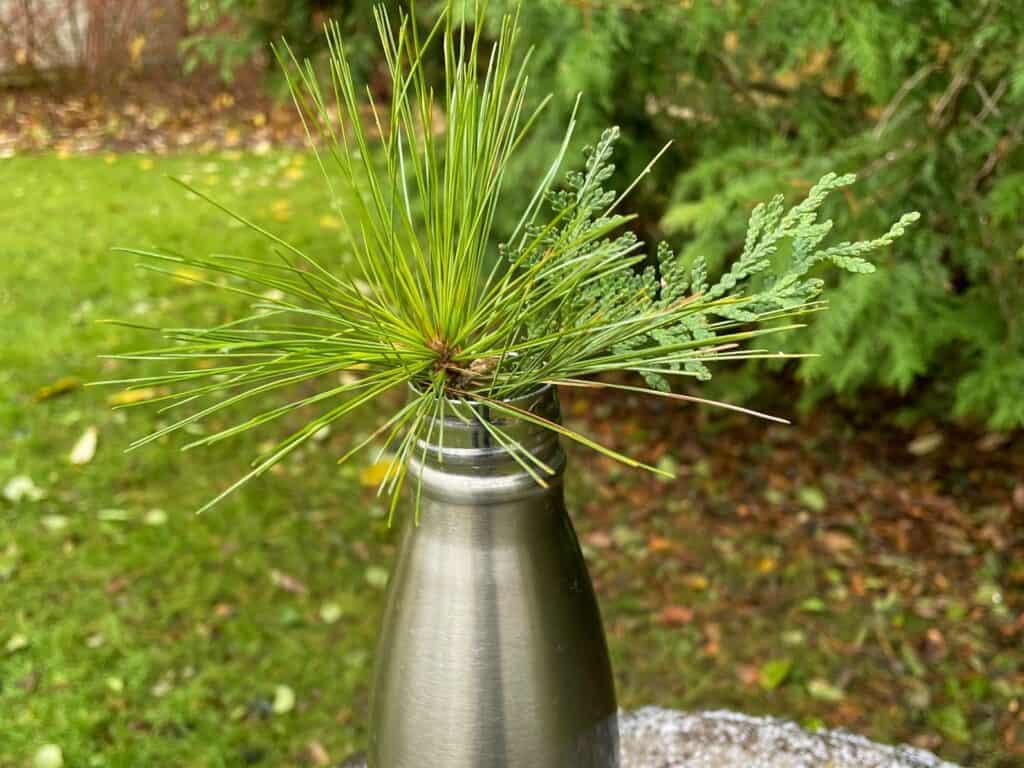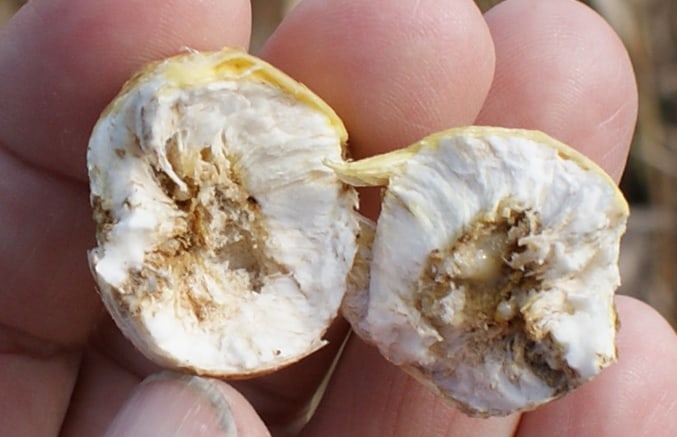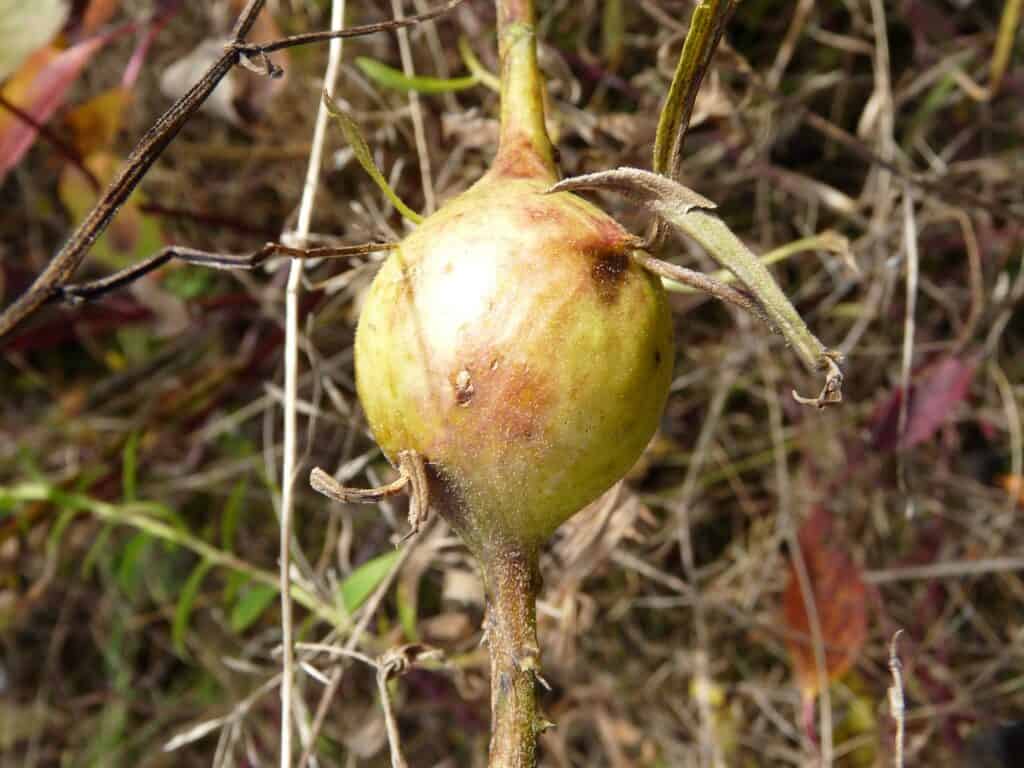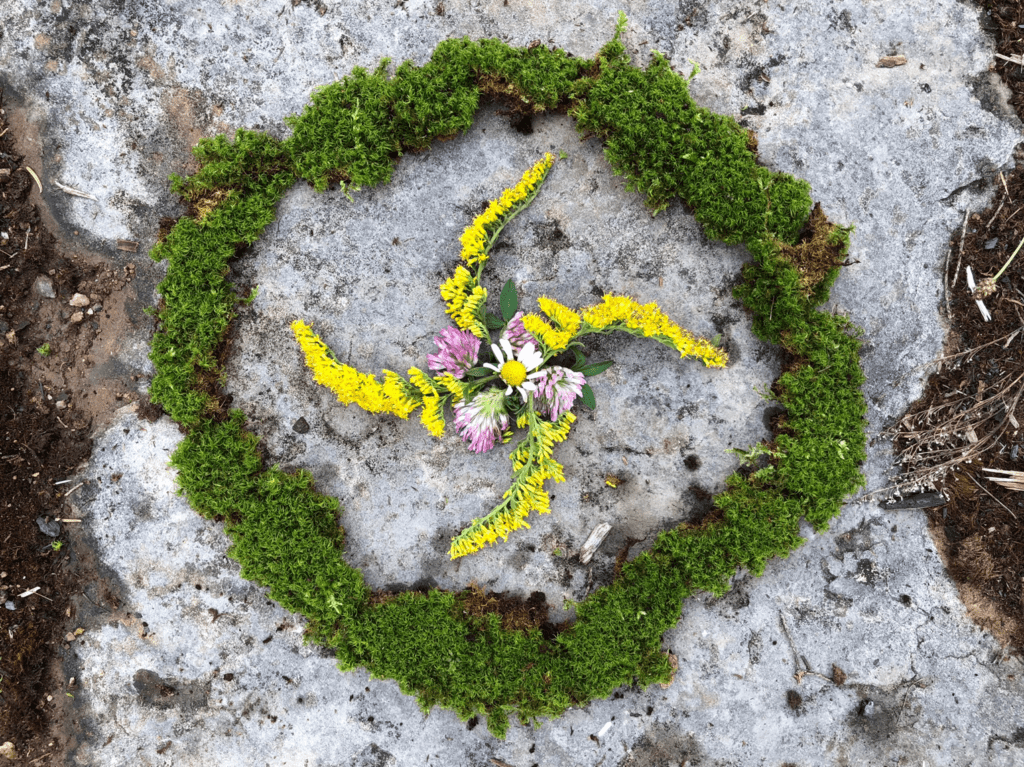Peterborough Examiner – November 19, 2021 – by Drew Monkman
Ten easy activities to engage more fully with nature
This week, I’d like to propose some simple activities to enhance a late fall or winter walk, be it alone or with friends or family. Activities such as these are also popular with kids and provide a fun way for them to appreciate nature more fully. Depending on the activities you want to try, bring along a jackknife, a few small Zip-lock bags, a hand lens or magnifying glass, and a thermos of hot water.
Make a forest tea
As you walk, harvest a handful of cedar foliage and white pine needles (long, soft, and in bunches of five). Put them in a thermos of hot water and let steep for 10 minutes or so. Let everyone have a sip. The resulting tea will be bitter but refreshing, and your tongue will dance with the pungent but evocative taste of the forest. This activity is best done early in the hike while the water in the thermos is still hot.
You’ve Got Gall!
Hidden in the galls found on goldenrod stems, the larvae of goldenrod gall flies are whiling away the fall and winter months. Galls are abnormal growths that occur on leaves, branches, and stems.
To see the larva yourself, look for goldenrods growing along open sections of a road or trail. They average 3-4 feet tall and have plume-like clusters of seeds at the top. Look for a plant with a ball-like enlargement on the stem. This is the gall. Remove it with a jackknife.
Carefully push the blade into the gall along the stem axis, inserting it less than half way. Twist the blade sharply until the gall splits open. Look for a small, white larva inside, curled up in a ball. Place it on the palm of your hand and watch it begin to move – even at temperatures below freezing.
In spring, the female fly deposits an egg on the tip of a newly emerging goldenrod stem. The larva that emerges eats its way into the plant and creates a chamber. The plant responds to the larva’s chewing and saliva by producing a growth – the gall – around the chamber. In early spring, the larval fly becomes active again and chews out a tunnel as an escape route, stopping just short of the outer surface. It then returns to the centre and transforms into a pupa. In June, the adult emerges from the pupa, wanders down the tunnel and, by inflating a spiny balloon-like structure on its head, pushes its way out of the gall. Now, you can’t say nature isn’t amazing!
Smells of the season
Fall is synonymous with the most evocative smells of the year. To appreciate them more fully, collect some of the following, placing each item in a separate Zip-lock bag: needles from several types of conifers; twigs dipped in the resin of pines or spruce (globs on the bark or cones) or balsam fir (pierce the blisters on the trunk); several large poplar buds; a clump of moss; and a handful of moist fallen leaves. Crush the plant material with the sides of the bag to release more of the smell. Pass the bags around and describe what you’re smelling. Everyone could even try to identify each odour with their eyes closed. Who has the most accurate nose?
Tree faces
The human brain is superb at seeing faces, even when they’re not really there. Stop beside some mature trees with gnarled bark. Old willows can be especially good. Scan the trunk for what looks like eyes (the base of broken off branches?) and maybe a mouth and nose (woodpecker cavities?). Have someone else come and look at what you’re seeing. Can they see the face, too?
Nature sculpting
There is art everywhere in nature. Just ask Andy Goldsworthy. He’s a British artist who uses natural materials like sticks, stones, and leaves to make “temporary landscape art” using only his hands. You might want to check out some of his work at https://tinyurl.com/2ky9evcj.
Stop along a section of trail where there’s leaves, stones, fallen cones, or anything else that could be arranged into an interesting display. Just avoid taking too much living material from any one spot. Think about pattern, colour, texture, and shape. Your creation can be flat on the ground, free-standing, or even hanging. Give it a name, take a photo, and then leave it for someone else to notice and enjoy.
Measure your shadow
With the winter solstice fast approaching, our shadows will soon be longer than at any other time of year. This is because the sun is so low in the sky, even at noon. To appreciate this hallmark of late fall, stand up straight with your back to the sun. If you’re with others, do so side by side. Take a moment to appreciate just how long your shadows are! This can make for a great picture. Try to do this again at the same time of day at the equinoxes and summer solstice. You’ll be amazed at how much your shadow length changes.
Be a bird magnet
It’s always fun to “pish in” birds for close-up views. As you walk, listen for chickadees or the call notes of other small birds. Then, position yourself close to branches where birds can land and begin to make “pishing” noises. Pishing consists of taking a deep breath and making the sound “shhhh” but adding a “p” in front of it. Repeat a series of “pshhhh” sounds, increasing the volume if there’s no response. Be patient because it may take a moment or two before birds approach. Chickadees, nuthatches, juncos, and woodpeckers are especially receptive to these sounds. To see and hear pishing in action, go to YouTube and search “Pishing in fall warblers”.
Go on a micro hike
Taking a “micro-hike” – maybe even on your hands and knees – opens up whole new worlds. It’s even better with a hand lens or magnifying glass. Some interesting subjects for close up exploration include rotting tree trunks, moss-covered logs, under fallen logs, and at the base of trees. When examining mosses, look for the wire-like stems with a spore-bearing capsule at the top. As always, share some of your micro discoveries with others.
Touch scavenger hunt
As you’re walking, gently touch some of the natural objects around you. How many textures and sensations can you find? Here’s some to get you started: rough, smooth, bumpy, sharp, silky, fuzzy, leathery, prickly, sharp, oily, sticky, squishy, warm, cold, and damp.
Etched in your hand
Lay down on your back beneath a large tree. Look up at the leafless canopy and pay close attention to the branches. Then, examine the wrinkles of your open palm. Notice how they look like the branches of a tree. Can you find branches on the tree that match the lines of your palm? Show the others where you found a close match.
Most of these activities can be found in Jacob Rodenburg’s wonderful new book entitled “The Book of Nature Connection: 70 sensory activities for all ages”. It will be available next spring.
CLIMATE CHAOS UPDATE
COP 26: Despite a weaker than hoped for statement to “phase down” rather than “phase out” coal, the final COP 26 climate summit agreement does include resolutions that show progress. For example, it sets an expectation that countries will quickly update their emissions-reductions pledges to put them in line with keeping global heating to 1.5 degrees above pre-industrial times. Present commitments put the planet on course to hit 1.5 C by 2040 (heating is now at 1.1 C) and soar past 2 C in the following decades. According to the Globe and Mail editorial of Nov. 10, “To combat climate heating requires a never-before-seen level of global cooperation. The world has not been able to overcome domestic self-interest, but it has moved relatively quickly in a short amount of time.” COP 27 will be held next year in Egypt.
CO2 ppm: A key measure of how much climate progress the world is making is the amount of CO2 in parts per million (ppm) in the atmosphere and whether it is rising. The pre-industrial level was 280 ppm and the highest level deemed safe is 350 ppm. The graphic below shows the unsettling current readings.
Take action: To see a list of ways YOU can take climate action, go to https://forourgrandchildren.ca/ and click on the ACTION buttons.




